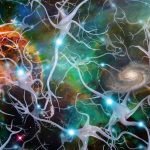Chemotherapy-Induced Peripheral Neuropathy
Tina Kaczor, ND, FABNO
When a patient presents with peripheral neuropathy, the prevailing challenge for any practitioner is finding the cause of the condition. In naturopathic oncology, the culprit is often obvious, being the patient’s treatment itself. The challenge then becomes: How do we mitigate neuropathic symptoms without removing the cause?
Chemotherapy-induced peripheral neuropathy (CIPN) is not the only neuropathy in oncology. Others include those affecting the central nervous system, enteric system and autonomic nerves. While all of these may cause serious, treatment-limiting side effects, they are not as prevalent as CIPN, a condition that may or may not regress upon cessation of treatment.
CIPN is characterized by sensory and/or motor symptoms in the extremities, and can range from the distal part of one digit to the classic “glove-and-stocking” distribution. Symptoms can vary from slight numbness and tingling to neuropathic pain and loss of proprioception. Difficulties with activities of daily living are not uncommon, as loss of fine motor skills can limit dexterity and affect gait. Electrophysiological testing also shows objective abnormalities of nerve conduction, though these studies are rarely necessary for diagnosis.
CIPN should not be confused with palmar-plantar erythrodysesthesia (PPE), commonly known as hand-foot syndrome. PPE is a distinctly different pathology that presents with neuropathic symptoms in the extremities, but is marked by epidermal changes, including reddening and desquamation of the hands and feet. PPE easily can be differentiated from CIPN by consideration of the chemotherapeutic agent being used.
CIPN is a well-recognized, doselimiting adverse effect of several classes of chemotherapy drugs. Some of these drugs include platinum-based cisplatin, carboplatin and oxaliplatin; taxanes paclitaxel and docetaxel; vinca alkaloids vincristine and vinblastine; and epothilone ixabepilone. There a few outlying agents not found in these classes, including thalidomide, bortezomib and lenalidomide, but there is no clinical data on the use of neuroprotective agents with these drugs (see Table 1).
Natural Treatment Agents
Since CIPN can cause an otherwise effective treatment to be withdrawn, the identification of protective agents is an urgent need in oncology. No drug has shown consistent neuroprotective effects in clinical trials (Wolf et al., 2008). A likely reason for the lack of any universal agent, natural or synthetic, to consistently mitigate symptoms of CIPN is that the mechanisms of neurotoxicity vary between drugs.
Regardless of presumptive mechanisms, several natural agents show clinical benefit in lessening this debilitating side effect. Glutathione, vitamin E and Lglutamine have demonstrated benefit with certain neurotoxic chemotherapeutics. The secret to successfully preventing CIPN is in knowing which natural agent to apply with which chemotherapeutic agent.
Let’s start with taxanes. The symptoms induced by taxanes are mostly sensory and increase with dose and duration of treatment. L-glutamine demonstrated a reduction in the intensity and/or duration of CIPN symptoms when used in high doses (Vahdat et al., 2001; Stubblefield et al., 2005). While it is best used as a preventive with the first treatment, clinical observation has shown that it does confer benefit, even when used later in the course of symptom development. Vitamin E has also shown clinical benefit with paclitaxel in a small trial of 32 patients, with only 18.7% of those taking vitamin E developing neuropathy vs. 62.5% of the control group (Argyriou et al., 2006).
Vitamin E, as alpha-tocopherol, is better established as a neuroprotectant when used in combination with platinum-derived drugs. Cisplatin, carboplatin and oxaliplatin are characterized by CIPN symptoms that mimic the presentation of vitamin E deficiency-induced peripheral neuropathy. Indeed, vitamin E deficiency has been found in patients given platinum drugs, and it has been postulated that protective effects of the nutrient may be due to repletion in this patient population (Bove et al., 2001). There have been several small pilot studies to date (Pace et al., 2003; Argyriou et al., 2005; Argyriou et al., 2006) and one ongoing clinical trial with preliminary data that confirms the neuroprotective effects of
vitamin E with platinum compounds (Pace et al., 2007).
One caveat to vitamin E is that as an antioxidant there is theoretical risk of interfering with the cytotoxic effects of chemotherapeutics. The data, while leaning toward a lack of interference, is not conclusive. For a review of the evidence regarding vitamin E as well as the other agents in this article, check a recent review in the European Journal of Cancer (Wolf et al., 2008).
Intravenous glutathione has also demonstrated prevention of neuropathic symptoms with cisplatin and oxaliplatin (Cascinu et al., 1995; Cascinu et al., 2002). Intravenous glutathione was given as a 1500mg push over 15 minutes just prior to treatment infusion. There was no change in the response rate between treatment and placebo arms, confirming the safety of the use of glutathione with platinum compounds specifically.
It should be noted that the newest platinum, oxaliplatin, can induce an acute neuropathy not seen with the other compounds in its class. The acute neuropathy is characterized by “peripheral nerve hyperexcitability occurring shortly after the infusion” (Wang et al., 2007). Clinically, this presents as painful extremities that are exquisitely sensitive to cold. Keeping the hands and feet covered and warm can reduce the likelihood of occurrence or the severity of this effect.
While there is no clinical data thus far on using L-glutamine with cis- or carboplatin, high-dose L-glutamine in combination with oxaliplatin has been looked at. A recent trial demonstrated clear reduction of CIPN development or severity in patients taking high doses of L-glutamine after oxaliplatin infusion (Nikcevich et al., 2008).
There is also trial data suggesting intravenous calcium and magnesium, preand post-oxaliplatin infusion, lessen the development of CIPN (Nikcevich et al., 2008; Gamelin et al., 2004). Importantly, IV cal/mag was shown not to interfere with drug efficacy in this trial. There is no data to date on the use of IV cal/mag with other platinum compounds.
Of course, we do not always see patients in the beginning, or even middle, of their chemotherapy treatments. For patients who have persistent CIPN after discontinuation of the drugs, evidence and experience show one natural agent to be of great benefit: acetyl-L carnitine (ALC). There is no human data on the concomitant use of ALC in conjunction with the neurotoxic chemotherapeutics. However, there is clinical data that shows improvement of persistent CIPN after treatment has ended (Maestri et al., 2005; Bianchi et al., 2005). This is an expected effect of ALC, given its well-known usage in reversing other peripheral neuropathies.
Unfortunately, due to their less-prevalent use in oncology, there is a dearth of clinical data on vinca alkaloids and the newer chemotherapeutic agents mentioned. In general, we should proceed with caution in using any agents that lessen side effects. While CIPN can be devastating, treating this side effect must not come at the expense of lessening treatment efficacy.
Of course, there are many natural agents not mentioned in this article, such as Hericium erinaceus, Hypericum, lipoic acid, vitamin B12, vitamin B6 and topical capsaicin. These agents may all have a role in aiding in the recovery of damaged nerves or in mitigating symptoms. However, I reviewed only those natural agents that have trial data demonstrating significant benefit and a clear safety profile.
Using the data as your guide, you will vastly improve patients’ quality of life by prioritizing the use of proven natural agents applied to the appropriate chemotherapeutic.
The Oncology Association of Naturopathic Physicians (OncANP) was founded in 2004 to enhance the quality of life of people living with cancer through both increasing the collaboration between NDs working with patients with cancer and integrating naturopathic practice into medical oncology care. With its co-organization, the American Board of Naturopathic Oncology (ABNO), the OncANP has set standards, instituted testing and now credentials Fellows in Naturopathic Oncology. The OncANP welcomes all NDs interested in improving their knowledge and ability to work with oncology patients. For more information see www.OncANP.org.
 Tina Kaczor, ND graduated from NCNM and completed a two-year clinical residency in integrative oncology at Cancer Treatment Centers of America. She is current president of OncANP, and serves as secretary of the American Board of Naturopathic Oncology Board of Medical Examiners. Dr. Kaczor is an adjunct faculty member at NCNM, overseeing students on a dedicated oncology clinic shift at the Pettygrove clinic in Portland. She currently practices at the Clinic of Natural Medicine in Eugene, Ore.
Tina Kaczor, ND graduated from NCNM and completed a two-year clinical residency in integrative oncology at Cancer Treatment Centers of America. She is current president of OncANP, and serves as secretary of the American Board of Naturopathic Oncology Board of Medical Examiners. Dr. Kaczor is an adjunct faculty member at NCNM, overseeing students on a dedicated oncology clinic shift at the Pettygrove clinic in Portland. She currently practices at the Clinic of Natural Medicine in Eugene, Ore.
References
Argyriou AA et al: A randomized controlled trial evaluating the efficacy and safety of vitamin E supplementation for protection against cisplatin-induced peripheral neuropathy: final results, Support Care Cancer Nov;14(11):1134-40, 2006.
Argyriou AA et al: Preventing paclitaxel-induced peripheral neuropathy: a phase II trial of vitamin E supplementation, J Pain Symptom Manage Sep;32(3):237-44, 2006.
Argyriou AA et al: Vitamin E for prophylaxis against chemotherapy-induced neuropathy: a randomized controlled trial, Neurology 64:26-31, 2005.
Bianchi G et al: Symptomatic and neurophysiological resoponses of paclitaxel- or cisplatin-induced neuropathy to oral acetyl-L-carnitine, Eur J Cancer Aug;41(12):1746-50, 2005.
Bove L et al: A pilot study on the relation between cisplatin neuropathy and vitamin E, J Exp Clin Cancer Res 20:277-280, 2001.
Cascinu S et al: Neuroprotective effect of reduced glutathione on oxaliplatin-based chemotherapy in advanced colorectal cancer: a randomized, double-blind, placebo-controlled trial, J Clin Oncol 20(16):3478-3483, 2002.
Cascinu S et al: Neuroprotective effect of reduced glutathione on cisplatin-based chemotherapy in advanced gastric cancer: a randomized double-blind placebo-controlled trial, J Clin Oncol 13(1):26-32, 1995.
Gamelin L et al: Prevention of oxaliplatin-related neurotoxicity by calcium and magnesium infusions: a retrospective study of 161 patients receiving oxaliplatin combined with 5-Fluorouracil and leucovorin for advanced colorectal cancer, Clin Cancer Res 10:4055-4061, 2004.
Maestri A et al: A pilot study on the effect of acetyl-L-carnitine in paclitaxel- and cisplatin-induced peripheral neuropathy, Tumori Mar-Apr; 91(2):135-8, 2005.
Nikcevich DA et al: Effect of intravenous calcium and magnesium (IV CaMg) on oxaliplatin-induced sensory neurotoxicity (sNT) in adjuvant colon cancer: Results of the phase III placebo-controlled, double-blind NCCTG trial N04C7. Proc Am Soc Clin Oncol 26:180s. Abstract 4009, 2008.
Pace A et al: Vitamin E in the neuroprotection of cisplatin induced peripheral neurotoxicity and ototoxicity, ASCO Annual Meeting Proceedings, Journal of Clinical Oncology 25(18S):9114, 2007.
Pace A et al: Neuroprotective effect of vitamin E supplementation in patients treated with cisplatin chemotherapy, J Clin Oncol 21:927-931, 2003.
Stubblefield MD et al: Glutamine as a neuroprotective agent in high-dose paclitaxel-induced peripheral neuropathy: a clinical and electrophysiologic study, Clinical Oncology (Royal College of Radiologists) 17(4):271-276, 2005.
Vahdat L et al: Reduction of paclitaxel-induced peripheral neuropathy with glutamine, Clin Cancer Res 7(5:1192-1197, 2001.
Wang WS et al: Oral glutamine is effective for preventing oxaliplatin-induced neuropathy in colorectal cancer patients, Oncologist 12(3):312-319, 2007.
Wolf S et al: Chemotherapy-induced peripheral neuropathy: prevention and treatment strategies, Eur J Cancer
July;44(11):1507-1515, 2008.










